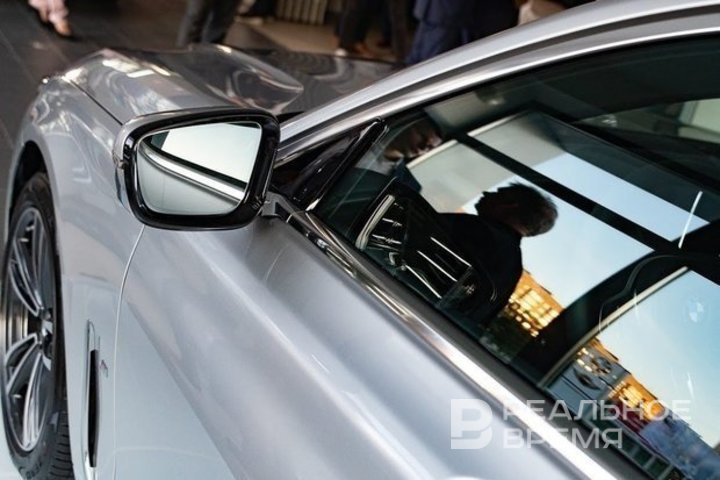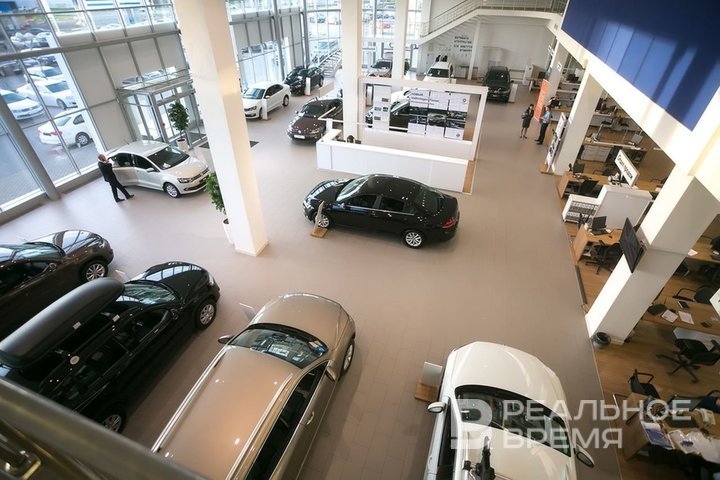Car sales in Russia plummet

A repeat of last year’s success appears out of reach for the Russian auto market. In the first quarter of 2025, sales of new vehicles dropped by 27% nationwide — and by 33% in Tatarstan. Last year’s bestsellers are rapidly losing ground. A high key interest rate is severely dampening consumer demand, shifting the balance once again in favour of buyers, who can now expect special deals and discounts. Who’s still leading the pack in Tatarstan? The latest report from Realnoe Vremya’s analytics team takes a closer look.
Last year’s frontrunners are losing ground
In the first quarter of 2025, the Russian new car market totalled 287,000 vehicles — a 27% drop compared to the same period last year, when 392,000 units were sold. Meanwhile, the market for domestically produced new cars stood at 154,000 units, marking an 8% decline from January–March 2024.
The European Business Association (EBA) paints a bleak picture across all market segments — but it’s the electric vehicle sector that’s facing a full-blown crisis: sales have plummeted by 67%, with just 2,100 units sold over the quarter.
Among the top 10 car brands in March, the steepest declines were seen by: Geely (–66%, down to 5,100 units), Changan (–61%, to 3,700), Omoda (–54%, to 2,100), Haval (–40%, to 9,800), and LADA (–38%, to 25,200), according to Avtostat-Info analyst Aleksandr Klimnov.

Meanwhile, Solaris (ranked 10th) bucked the trend, emerging as the surprise leader with a 9.3-fold increase in sales — reaching 1,600 vehicles sold.
Looking at the first quarter as a whole, the biggest year-on-year declines were seen in: Exeed (–59%, down to 4,500 units), Geely (–55%, to 16,400), Omoda (–39%, to 6,500), Changan (–36%, to 12,800), and Chery (–21%, to 25,800).

“New car prices fell by 7% in February — and used car prices by 1% — largely due to falling demand for Chinese brands and AvtoVAZ models, the latter of which saw a 16% drop in the first quarter of 2025. Oversupply has been building since last year,” the analyst says.

AvtoVAZ retains its leading position in the Russian market. The top-selling brands in the first quarter of 2025 were: LADA (77,400 units), Haval (31,200), Chery (25,800), Geely (16,400), Changan (12,800).
“AvtoVAZ is holding on, but facing enormous problems — according to company president Maxim Sokolov, around half a million vehicles have piled up at the plant's finished goods lots and at dealerships," notes Alexander Klimnov.
“Consumers are turning away from former favorites like Exeed, Omoda, Haval, Geely, and Chery, which are now forced to lower prices, including through major discounts — the boom in the 'Chinese car' market is definitively over. Many of the less successful manufacturers will likely have to leave the market," commented Alexander Klimnov. “Although there is some reverse movement as well — certain Chinese brands are entering our market officially, such as KNEWSTAR, SOUEAST, WEY, and XIAOMI,” Alexander Klimov commented on the situation.
Car sales fell by 33% in the first quarter in Tatarstan
According to automotive analyst Alexander Klimnov, the situation in Tatarstan is just as grim as in the rest of the country. In March, sales of new cars in the republic plummeted by 51%, dropping to 3,300 units. Over the first quarter, the decline reached 33%, with just 9,800 vehicles sold. LADA remained the market leader in March with 1,325 cars sold — a year-on-year fall of 47%. It was followed by Haval (383 units, down 50%), Chery (365, down 36%), Geely (167, down 67%), and Changan (150, down 62%).
LADA led the regional market for the quarter with 3,747 vehicles sold — a 30% decline compared to the same period last year. It was followed by Haval (1,228 units, down 29%), Chery (1,135 units, down 18%), Changan (571 units, down 26%), and Geely (502 units, down a steep 58%).

According to Karaulov, the market itself has not undergone significant changes — it continues to be defined by high inertia and a tendency among customers to delay purchases. The current key interest rate is holding back consumer activity.
“We are seeing positive momentum in the used car segment: in March, sales across our network were up 28% compared to February. The brand mix remains stable here — with LADA, Kia, Hyundai, Renault, and Volkswagen traditionally leading the pack,” Karaulov noted.

“It’s important to note that despite the growth compared to February, overall figures for February–March 2025 still fall short of the same period last year,” the TTS representative concluded.
The market has shifted in favour of the buyer

Despite the decrease in consumer purchasing activity, the list of leaders in terms of consumer interest remains unchanged. Leading the pack, according to Auto.ru, are three brands: LADA, Haval, and Chery. These brands also hold the largest market shares in the new car segment at the federal level.
“Since the beginning of the year, we have observed a stable volume of new car offerings, and there are no significant signs of change in the situation. An analysis of listings from official dealers at the end of the first quarter showed that the market has once again shifted in favour of the buyer. Sellers are now more frequently offering special conditions that make the purchase more advantageous," says Ananyev.

It is possible that this sales dynamic is driven by changing consumer preferences: buyers are dissatisfied with the brands of cars available on the market, are not satisfied with their design and technical specifications, and have chosen not to purchase new cars.
“The shift in the structure of the domestic car market could also influence sales, as new generations enter the market, for whom owning a car is not a priority, and they may opt to use public transportation instead," the analyst concluded.